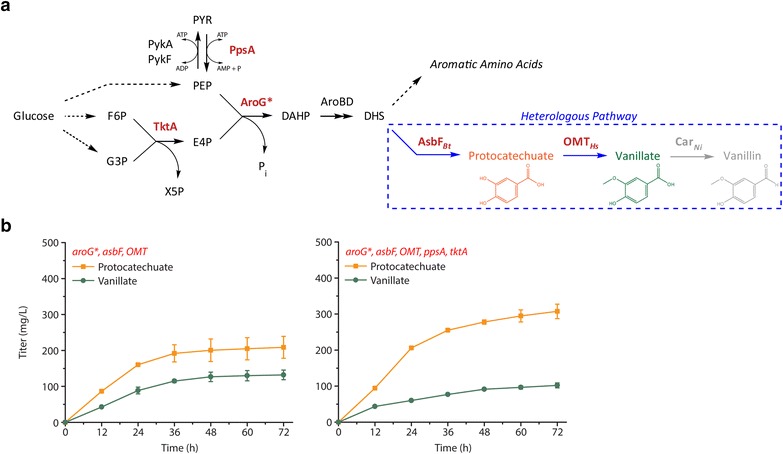Fig. 1.

Conversion of protocatechuate to vanillate limits engineered de novo vanillin biosynthesis in E. coli. a Metabolic pathway diagram depicting engineered route from glucose to vanillin. Genes corresponding to enzymes labeled in red are overexpressed in this study. Enzymes written without subscripts are native to E. coli. Dashed blue lines indicate the heterologous portion of the pathway. The gene corresponding to CarNi (shown in gray) is not overexpressed throughout this study to avoid confounding presence of aldehydes during pathway troubleshooting. Thus, only solid blue arrows represent heterologous reaction steps pertaining to this study, where vanillate is the desired end product. Maximum theoretical yields of vanillin and vanillate using this pathway are 0.395 and 0.414 mol/mol_glucose, respectively. b Time-course experiment in which the PTS− glu+ RAREʹ host strain was transformed to express aroG*, asbF Bt, and OMT Hs or ppsA and tktA in addition to the other genes. Titers of heterologous metabolites protocatechuate and vanillate were measured every 12 h by HPLC and reveal bottleneck in conversion of protocatechuate to vanillate. Genes overexpressed in each experiment are labeled in red. Titers of protocatechuate increase by roughly 50 % when ppsA and tktA are overexpressed, suggesting flux into the heterologous pathway increased. However, vanillate titers do not improve, motivating subsequent focus on conversion of protocatechuate to vanillate
